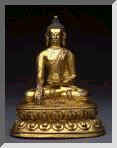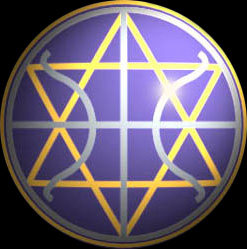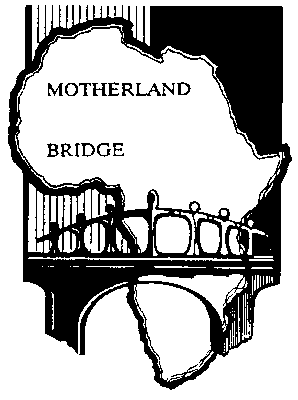Magick, not unlike physics
or chemistry, operates according to certain laws. These laws, as well as
those of the sciences, reside in reality within the heads of those who use
them. However, the analysis of reality into artificial categories is useful
at certain levels of investigation. It is well to bear in mind,
nevertheless, that such categories reflect more the contents of the human
mind than they do of whatever "reality" might be out there.
For the following analysis, we are indebted to REAL MAGIC by P.E.I. Bonewits.
Mr Bonewits, incidentally, holds the first Bachelor of Arts degree in
magic(k) ever awarded. He, much to the chagrin of some of the faculty of the
University of California, was awarded the degree in June, 1970.
LAW OF CAUSE AND EFFECT
Anything done under EXACTLY the same conditions will always be associated
with exactly the same result. This law is taken for granted in the sciences
and in everyday life. The whole concept of causation is now on shaky ground,
thanks to developments in the field of quantum physics. But for practical
purposes, in magick as well as in our everyday lives, we ignore causality to
our own peril. We must assume, at least in dealing with things the size of
human beings, that effects follow causes. Even in the constantly flowing,
changing astral realm we find the law of cause and effect in full operation.
LAW OF KNOWLEDGE
This law tells us that "understanding brings control," that the more you
know the more powerful you are. If you know all about something, you have
total control over it. "Knowledge is power."
LAW OF SELF-KNOWLEDGE
This is a sub-law of the previous law and follows from it. If you know
yourself, you control yourself. The more you know about yourself, the better
you can control yourself. LAW OF NAMES. This law is related to the Law of
Knowledge and to the Law of Association. It states if one knows the whole
and complete name of a phenomenon or entity, one has complete control over
it. This is one of the reasons the Mystery Religions (including
Christianity) conferred a new name on the neophyte. His new name was then
his true name, but it was known only to his fellow members of the mystery.
The Law of Names also relates to the Law of Personification which will be
explained later. Two premises behind the present law are: (1) Names are
definitions. This is more obvious in simpler languages, but it is as true of
English as of any other. Sometimes the definition is hidden in the origin of
the word, as is often the case with those derived from Latin or Greek, but
it is there. (2) Names are mnemonic (memory) devices which trigger a range
of associations. (See the Law of Association).
LAW OF WORDS OF POWER
This is a sublaw of the Law of Names. It states that certain words
trigger changes in the inner and outer realities of the person saying them.
Many of these words are corruptions of the names of ancient Gods. Words like
"Abraxas," Osorronnophris," "Abracadabra" are examples. They have no meaning
to us today, but THEIR POWER LIES IN THE SOUNDS OF THE WORDS THEMSELVES.
LAW OF ASSOCIATION
If two things have something in common (anything!), that thing can be used
to control both. Bell's theorem in quantum mechanics indicates that every
particle in the Universe affects every other. The following two sublaws,
which anthropologists think are the basis of "primitive" magick, are more
useful in practice. These are the Laws of Similarity and Contagion.
LAW OF SIMILARITY
Most people have heard of sympathetic magick, which is based on this
principle. Effects resemble causes. To make something fly, put feathers on
it and make chirping noises. Wave it in the air. The example is not entirely
absurd and serves to illustrate the principle. Much of the magick of
"primitive" people is of this nature. For example, rain is made by (among
other actions) sprinkling water on the ground (or by washing your car -- a
modern example of the same principle!).
LAW OF CONTAGION
This is the principle behind doll-sticking and such in "primitive"
magick. This directly relates to Bell's theorem and states that things once
in physical contact continue to influence one another after they have been
separated. This relates more to our consciousness than to things as they are
in the physical world, but defining the two is more difficult than they
appear on the surface. Thinking, feeling, and memory are associational
functions of the human brain. New data are related to existing knowledge and
patterns are established which correlate particular elements of knowledge.
The overall pattern, which includes the "personality" and the "world view"
is the METAPATTERN of all this. This metapattern we may consider to be made
up of the memories, fantasy images, beliefs, values, techniques, rules of
behavior, attitudes, etc. which make up the individuality of the person.
LAW OF IDENTIFICATION
This law relates to those of Knowledge, Association and Personification. It
states that by complete association between your metapattern and that of
another entity, you can BECOME that entity. You can then examine your own
metapattern from the point of view of that entity. At full identification,
one "becomes" the entity. All idea of distinctness vanishes and you are
empowered with all the attributes of that entity because you ARE that
entity. The danger here is that many people become lost in the new identity
as the stronger metapattern submerges the weaker. Proper training, practice
and guidance will lessen the danger.
LAW OF SYNTHESIS
Two opposing ideas or items of data will be resolved into a third idea
that is more valid than the first two. This principle allows you to hold two
seemingly contradictory ideas (such as, "Electrons are particles," and
"Electrons are waves.") at the same time. Reality is as it is, not as we
conceive it (or even as we perceive it, for that matter). The wave-particle
duality in physics is an example. Physicists were nonplussed to observe in
their experiments that light behaved (depending on the experiment) sometimes
like a wave and sometimes like a particle. Light striking a surface of
copper, say, releases electrons from the surface. This phenomenon, when
examined closely, demonstrates that light is made up of particles (now
called photons) which impart energy to the electrons, allowing them to
escape. However, another experiment, in which we direct a beam of light at
some pinholes, "proves" that light is of the nature of waves. If we direct a
beam of light at an arrangement of pinholes: assuming that we have a beam of
"parallel" light (a plane wavefront), we see the light projected onto the
screen. If we cover one of the pinholes, we see a single illuminated spot on
the screen. If we uncover the first and cover the second pinhole, we again
see a single spot projected onto the screen. Now, if we uncover both
pinholes, what do we see? Two spots of light? No! We see a pattern of
alternating light and dark bands on the screen. This phenomenon is due to
INTERFERENCE between the crests and troughs of the WAVES of light as they
strike the screen. When two crests occur together, or two troughs, the
amplitude is doubled, and we get a bright area. But when a crest and trough
coincide, they cancel each other, and the result is a dark spot of zero
amplitude (no brightness). The point of all this is that interference is
necessarily a WAVE phenomenon. The experiment demonstrates the wave nature
of light. How do we resolve the dilemma? By realizing that we are dealing
with something that is neither a wave nor a particle, but SOMETHING ELSE.






